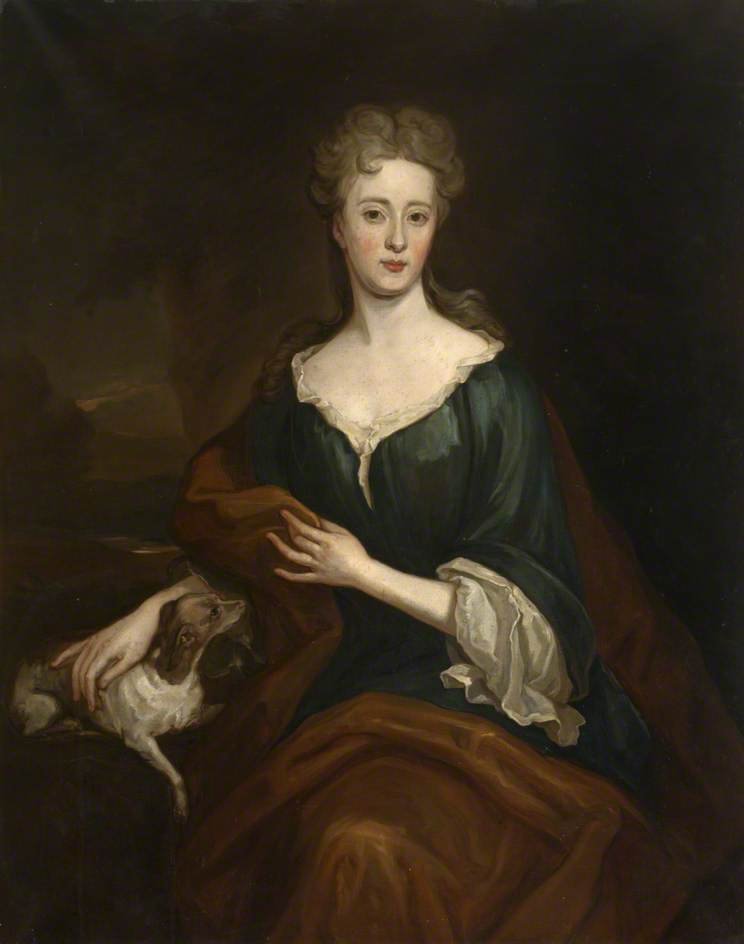Four Remarkable Women, a blog series by Patricia Bernstein - Part 3, Winifred Maxwell
Winifred Herbert Maxwell, The Countess of Nithsdale is portrayed by Bethan Glentaggart in the novel A Noble Cunning: The Countess and the Tower
In my debut novel, A Noble Cunning: The Countess and the Tower, my heroine Bethan Glentaggart is a fictional version of real-life Jacobite heroine Winifred Herbert Maxwell, Countess of Nithsdale.
Winifred Maxwell is not nearly as well-known as Flora MacDonald, the young Scotswoman who helped “Bonnie Prince Charlie” escape Scotland after the final Jacobite catastrophe at the battle of Culloden. But I might argue that Winifred’s deed—rescuing her husband from the Tower of London the night before his scheduled execution—was an even more difficult feat and was accomplished right under the noses of the guardians of Britain’s most celebrated prisoners.
“Jacobites,” by the way, were supporters of “James,” (Jacobus is Latin for “James.”)—that is, Prince James Francis Edward Stuart, son of the Catholic King James II who was forced off the throne in the so-called “Glorious Revolution” of 1688. Jacobites wanted a real British prince on the throne—even though he had been raised in exile—in place of the German George I, who was imposed on Britain after the death of Queen Anne in 1714 only because he was the nearest relative to Anne who was a Protestant.
Winifred was raised in Powis Castle in Wales, a child of the highest level of British nobility. Her father was a marquess and baron, and her mother was the daughter of a marquess. Yet the family was subject to intense persecution because the Herberts were devoted Catholics at a time when Catholics were considered so dangerous that they were not even allowed to practice their religion. Severe laws were passed forbidding British Catholics to host a priest, participate in a mass, or even own a rosary. They were also forbidden to vote, buy land, or hold office. All citizens were required to attend Church of England (Anglican) services or pay a substantial fine. Both of Winifred’s parents spent time in the Tower of London, victims of false charges reported by informers for money or favor.
When King Charles II died in 1685, and his younger brother James, a Catholic, became king, it appeared that the troubles of British Catholics were over. How could Catholics be persecuted when the king himself was a Catholic?
But James II’s reign was tragically brief. In 1688, England was invaded by William of Orange, who was married to Mary, one of James II’s Protestant daughters by his first wife. Winifred’s family fled into exile with the deposed king, who lived out the rest of his life in the old palace of Saint Germain-en-Laye outside of Paris, his hopes pinned on his infant son James Francis Edward.
In 1699, when Winifred was 27, having given up almost all hope of ever marrying, a handsome young Scottish Catholic aristocrat, William Maxwell, Earl of Nithsdale, came to Paris and proposed. Winifred accepted his proposal at once and rode off into the sunset with William to his estate Terregles in the Scottish Lowlands, only to discover that her charming new husband was an incorrigible spendthrift, always mired in hopeless debt.
In addition, Terregles was located in the Scottish Lowlands, the most intensely Protestant part of Scotland where the position of the Maxwells was always insecure. In 1703, when William was away from home, Terregles was actually attacked by a mob of fanatical Protestants who rampaged through the house searching for an illegal priest. No priest was found and the Covenant ministers who led the mob were ultimately fined, but that was little comfort.
Persecution of Catholics and secret Jacobite plotting continued, even after laws were passed declaring that no Catholic could ever sit again on the throne of Britain and after Scotland and England were formally united in 1706. In the meantime, William and Mary never produced heirs, and neither did Mary’s younger sister Anne, when she succeeded to the throne. When Anne died in 1714, and the first German king was foisted on the nation—an unappealing character who spoke no English—it seemed the best opportunity had arrived to get rid of George and put the young Prince James on the British throne.
But the Jacobites, despite their bravery, passion and determination, were always fated to be badly led. The 1715 Jacobite Rebellion against King George I began in August and ended at the battle of Preston in November. Winifred’s husband William was taken to London, tried for treason and sentenced to death. Winifred traveled alone from Terregles to London in the midst of a terrible snowstorm, as described in A Noble Cunning.
She then presented a petition for mercy to George I, only to be scorned and disregarded almost exactly as described in my novel. Apparently, George I never forgave Winifred for being part of the scandalous scene he actually created himself by refusing to accept her petition for mercy. I would guess that no courtier who was present ever forgot George’s disgraceful and “un-British” behavior. Her plea for mercy refused, Winifred began to develop a rescue scheme so daring that no one else had ever tried it before, much less succeeded.
In my novel, I described William as having become gaunt as a result of his depression and lack of appetite as he anticipated his coming execution. In real life, however, by 1716, William was no longer the beautiful, slim youth Winifred had married in 1699. He had grown quite stout in middle age—so a dress and cloak had to be found that were large enough to fit him! A cloak on display at Traquair House in Scotland is said to be the actual cloak he wore as his disguise when Winifred spirited him out of the Tower.
Apparently George I was utterly furious when he was told of William’s escape. He was convinced that William Maxwell must have had help from the inside (for, after all, how could a group of mere women carry off such a daring plot, right?). Five Tower warders were fired, though the Lieutenant of the Tower who was in charge of all was not. Later, it was published that the king had declared with charming insouciance, “…for a man in My Lord’s situation, it was the very best thing he could have done.” In private he said, Winifred “had done him (the king) more harm than any woman in Christendom.”
A servant in the Venetian Embassy managed to dress William as a footman in Venetian livery and smuggle him out of the country, while Winifred tempted fate even further by returning to Scotland to see her daughter who had remained with her in-laws and to strip Terregles, house and lands, and sell everything she could before the authorities took it over. She also needed to recover the papers proving that William Maxwell had made over ownership of his entire estate to his son before he went off to war.
The Maxwells spent the rest of their lives in exile in France and Italy, where William continued to spend too much and complain about the hardships of exile. At times I have wondered whether Winifred performed her unforgettable deed because she loved her husband too much to let him die—as I have suggested in my novel—or perhaps at least as much for other reasons.
Winifred may have believed it was simply her wifely duty to save William’s life if she could. Or she may have been so infuriated by the rough treatment British Catholics had endured all of her life that she wanted to show her tormenters how she could frustrate and shame the government’s cruelty in the very center of government power. Whatever her real motivations, Winifred Maxwell accomplished something that everyone would have said couldn’t be done, saving her husband’s life and thumbing her nose at the mighty British government at the same time.
“I love a good historical novel about women with brains, heart, and courage. In A Noble Cunning, Patricia Bernstein’s finely-spun yarn of Jacobite sympathizer Countess of Clarencefield—inspired by the true adventures of Winifred Maxwell, Countess of Nithsdale—the author brings both the Scottish Lowlands and Hanoverian London vividly to life with a keen eye for period detail and a heart-stopping denouement.”
– Leslie Carroll, author of Notorious Royal Marriages




